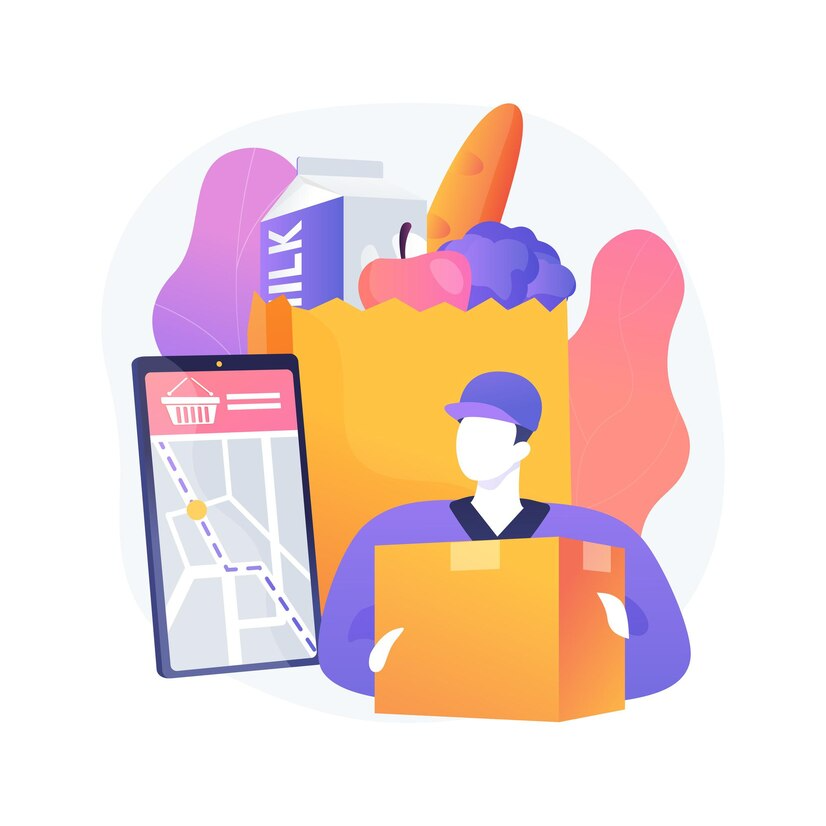The Role of User Experience in Effective Grocery App Development
The grocery shopping experience has drastically changed over the years. With technology advancing rapidly, more and more consumers are turning to mobile apps to order their groceries online. However, with a crowded market filled with various apps, what sets one grocery app apart from another? The answer is simple: user experience (UX).
User experience is a critical factor in grocery app development. It focuses on how users feel when interacting with an app and how easy it is to achieve their goals. In the world of grocery apps, if a user has a frustrating or confusing experience, they’re likely to turn to a competitor. This is why ensuring a seamless, intuitive, and enjoyable user experience is so important for the success of a grocery app.
In this blog, we’ll explore the importance of user experience in grocery app development, and how it can directly influence customer satisfaction and business growth.
Why User Experience Matters in Grocery App Development
Customer Expectations Are Higher Than Ever
In today’s digital age, consumers have higher expectations when it comes to online shopping experiences. Whether they’re buying clothes, electronics, or groceries, users expect apps to be intuitive, responsive, and quick. Grocery shopping, in particular, involves a series of steps—from searching for products to adding them to the cart and completing the checkout process. A bad experience at any stage can lead to frustration, abandoned carts, and lost sales.
For grocery apps, the experience must be smooth and hassle-free. A user should feel confident navigating the app, finding what they need, and making a purchase without any confusion or delays. The more seamless the experience, the more likely customers are to return.
Competing for Attention in a Crowded Market
The grocery app market is growing rapidly, and there are plenty of options available for consumers. Big players like Instacart, Walmart, and Amazon have dominated the space, but smaller, niche apps are emerging as well. To stand out in such a crowded market, your app must provide an exceptional user experience that keeps customers coming back.
A positive UX leads to higher customer retention rates and more word-of-mouth recommendations. On the other hand, a frustrating experience can drive users away and negatively impact your brand’s reputation. For grocery app developers, focusing on UX is not just an option—it’s essential for success.
Key Elements of a Strong User Experience in Grocery Apps
1. Simple and Intuitive Navigation
When developing a grocery app, one of the first things to focus on is navigation. Users should be able to find products quickly and without confusion. This means having a clear, well-organized layout with easy-to-find categories, such as fruits, vegetables, dairy, snacks, and so on.
Search functionality should be fast and accurate, helping users find items with minimal effort. Implementing filters based on price, brand, popularity, and dietary restrictions is also essential. For example, users who prefer gluten-free products or vegan items should be able to filter their search results accordingly.
An intuitive design ensures that even first-time users can get familiar with the app quickly. If users struggle to find what they need, they will likely abandon the app and search for a better experience elsewhere.
2. Fast and Seamless Checkout Process
The checkout process is one of the most crucial steps in a grocery app, and it can either make or break a sale. A complex or lengthy checkout process will frustrate users and increase cart abandonment rates. To improve user experience, the checkout should be as simple and fast as possible.
Here are some best practices for optimizing the checkout experience:
- Guest Checkout: Not everyone wants to create an account before making a purchase. Offering a guest checkout option allows users to make a purchase quickly without any unnecessary steps.
- Multiple Payment Options: Users should have the flexibility to choose from different payment methods, such as credit cards, digital wallets (like Apple Pay or Google Pay), and cash on delivery.
- Clear Order Summary: Before completing the purchase, users should be able to view a summary of the items in their cart, the total price, and any discounts applied. This ensures transparency and prevents errors.
3. Speed and Performance
In the fast-paced world of mobile apps, speed matters. Slow-loading pages or laggy responses can significantly impact the user experience. Research shows that 53% of mobile users abandon an app if it takes more than 3 seconds to load. This is especially critical for grocery apps, where users are often on the go and need a fast, responsive platform.
To ensure a smooth experience, the app should be optimized for quick load times and responsiveness. All aspects of the app—whether it’s browsing products, adding items to the cart, or completing the checkout process—should feel instantaneous.
4. Personalized Recommendations
One of the most powerful features of a grocery app is personalization. When users open the app, they should feel like it’s tailored to their needs. AI-driven personalization can help recommend products based on a user’s previous purchases, preferences, and browsing history.
For instance, if a user frequently buys organic products, the app can highlight organic items on the homepage or in search results. Additionally, personalized recommendations make the shopping experience feel more convenient, as users don’t have to search through the entire catalog for products they may like.
This level of personalization makes the app more engaging and increases the likelihood of repeat purchases.
5. Easy Access to Customer Support
Even with the best app design, issues can still arise. Whether it’s a payment issue, delivery delay, or simply a question about a product, users should have quick access to customer support. Offering a live chat feature within the app allows users to reach out to customer service immediately.
Another important aspect of support is providing a comprehensive FAQ section. This helps users quickly find answers to common questions without needing to contact customer support.
A responsive and accessible support system ensures users feel valued and confident in their purchase, which can improve retention rates and overall satisfaction.

Conclusion
User experience plays a pivotal role in the success of a grocery app. With higher customer expectations and intense competition, businesses cannot afford to overlook the design and functionality of their apps. A seamless and enjoyable experience—from easy navigation to fast checkout and personalized recommendations—can significantly impact customer retention, sales, and brand loyalty.
If you are looking to develop a grocery app that stands out in the competitive market, it’s essential to partner with a skilled app development company. A professional on-demand app development company can help you create an intuitive, user-friendly app that provides an exceptional experience for your customers. With the right focus on UX, your grocery app can become a go-to platform for users, ensuring long-term success and growth.















1 comment